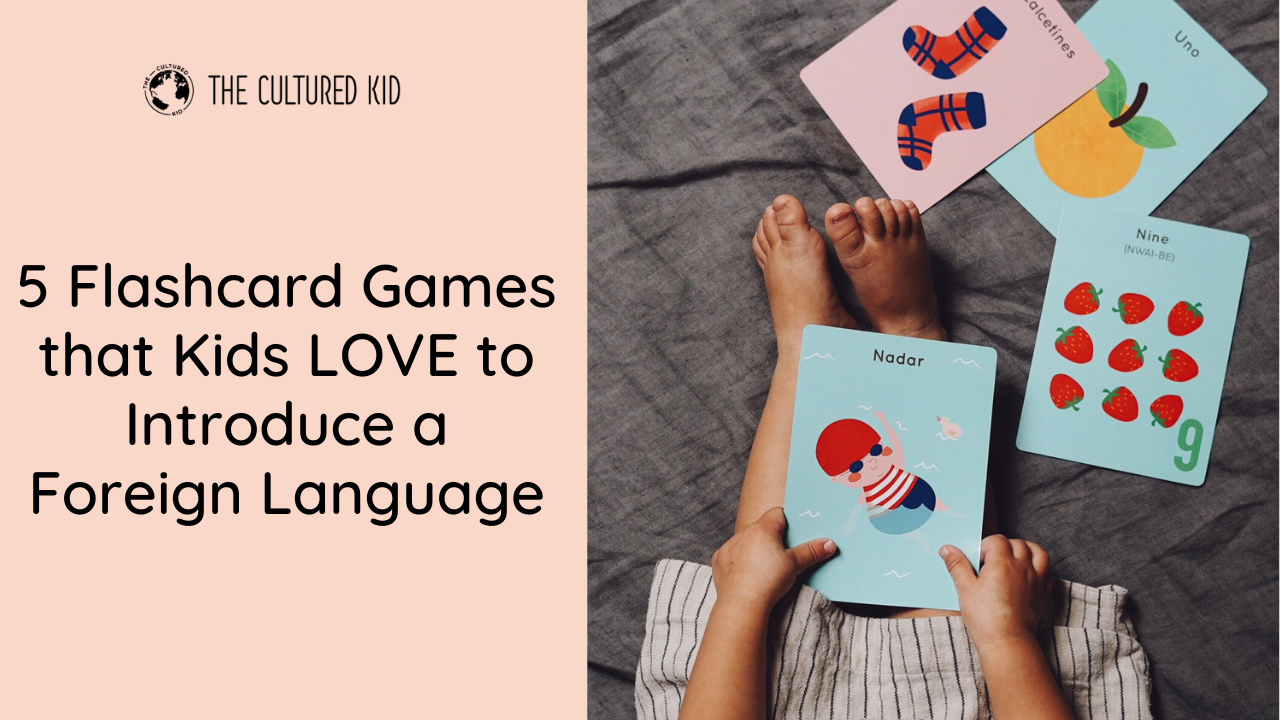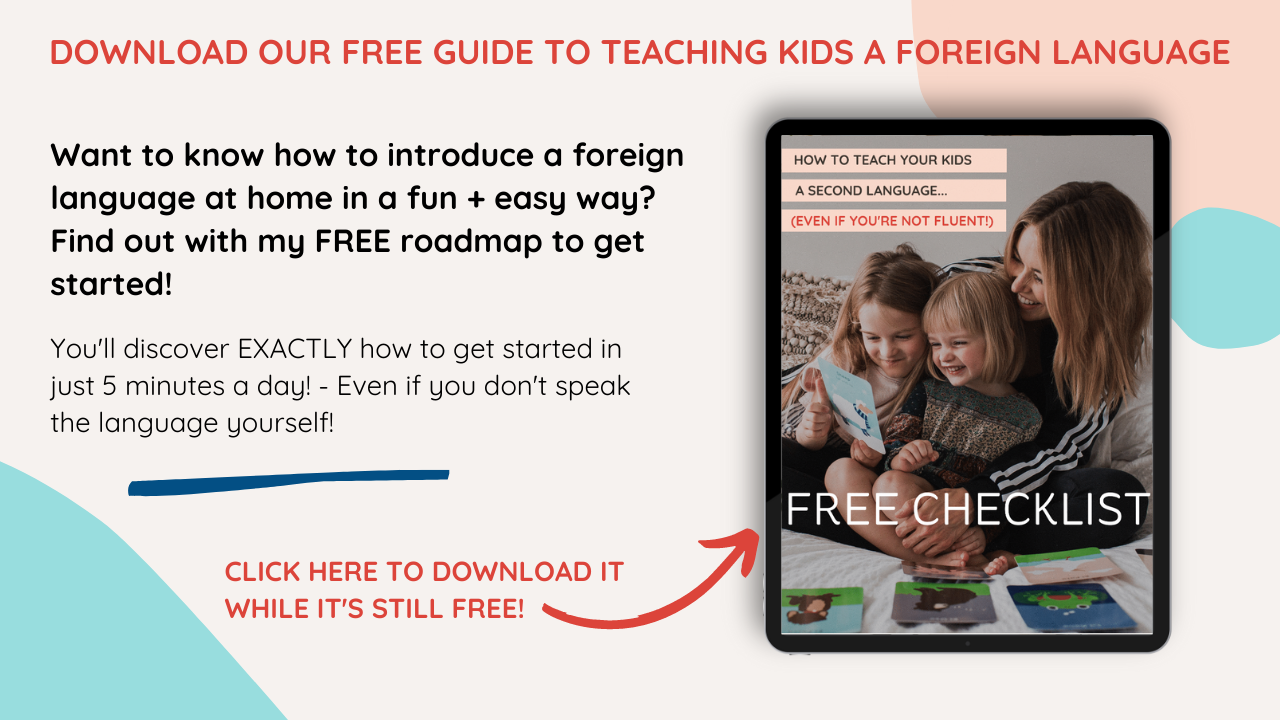5 Flashcard Games That Kids LOVE to Introduce a Foreign Language

5 Flashcard Games That Kids LOVE to Introduce a Foreign Language
Just in case someone missed it, we are long past the days where you would just pop your kids down at the table, slide a textbook in under their noses and let them do the rest on their own while we as parents hope for the best. We have come so far with new and exciting methods of teaching; there are a lot more creative and engaging ways of teaching that you might as well chuck that textbook out the window.
With a little bit of creativity, you can turn almost anything into a game, so let me give you a few examples whilst focusing on the use of flashcards. It is important to note that all of these games can be adapted in their level of difficulty, as well as the level of competitiveness (if any is wanted or not).
-
Musical Flashcards
This particular game is excellent for speaking practice and works best when it is used to review content that has already been taught to the kids, meaning they have to be familiar with the words/pictures on the flashcards before playing.
To play this game, you will need a large table or simply an open space on the floor in a large room. Place the chosen flashcards upside down on the table while making sure that there is at least one flashcard per child playing the game on the table or open space that you will use to play the game.
Choose a fun and lively song that your kids love to listen to. When you start playing the music, your kids will all start to move around the chosen space in the same direction. Once the music stops, your kids will also have to stop and pick up the flashcards that are closest to them and say out loud what is on the flashcard.
Some adjustments can be made if you want to add a bit of competition or interaction in the game. For a slight competitive edge, you can change the game so that you have to see who can name/identify their own flashcard the fastest.
For more interaction as a group, you could let your kids identify each other’s flashcards. This will allow your kids to effectively use the target language while having fun and moving their bodies.
-
Simon Says Show Me
This game is relatively straightforward, as I’m sure most of us have played some version of Simon Says as a child. When playing this game, you will take all the flashcards that you want to use and stick them on the wall where the kids are easily able to reach them. Take some time to explain the rules thoroughly to the kids and perhaps even play a practice round to make sure they fully understand how to play.
Let’s use an example and say you were teaching fruits and now your wall is filled with fruit flashcards. You will say “Simon Says show me the apple” and your kids would have to find the apple flashcard and go and touch it.
Whenever you give them these instructions without saying “Simon Says”, they would have to keep standing and not move to touch the flashcards. If they did, however, go and touch the flashcard without you saying “Simon Says”, you could use some fun or active movements like spin around 5 times, or jump like a frog to the kitchen and back. You can choose any such movements that you think your kids will enjoy.
-
Telephone (aka Chinese whispers)
Not only is this game great for repetition and pronunciation practice, but it is also very likely to give you quite a few laughs the first few times you play it. Take all the flashcards that you want to use and either stick them on the wall or put them in a line on a table. Let you kids line up next to each other with you at one of the ends.
Choose one of the flashcards and whisper that word into your kid’s ear that is standing right next to you. He/she would then have to whisper that word to the next child and continue like that until you reach the last child. The last one would then have to go and find the correct flashcard based on the word that you whispered down the line.
That kid would then join the front of the line to be the first one to be whispered to in order to make sure that each kid gets a turn to go and find the correct flashcards. If your kids are becoming more advanced, you can adjust the game to include short sentences instead of only one word whispers.
-
Scavenger Hunt
Take all the flashcards that you want to use for this game and show them one by one to your kids while repeating the words on the cards. When your kids are familiar with the flashcards, turn them all upside down while still repeating each one of the words on the flashcards. Then have your kids close their eyes while you remove one of the cards and hide it somewhere in the house or even a smaller area within the house.
When your kids open their eyes, they should try to determine which card is missing. Once they have figured out which one is missing, they have to go on a scavenger hunt through the house or designated area to see who can find the flashcard first. If you have a few kids playing the game and you want to make it more engaging for them, you can have your kids take turns to be the one to choose a card and go to hide it within the designated area of the house.
-
Flashcard Guessing Game
This game works perfectly whether you have a single child or several kids to play with. Take the flashcards that you want to use and make a duplicate set. Place one set face down on the right hand side of the table and the duplicate set face down on the left hand side of the table. If you want to make it harder, you can have picture flashcards on the right hand side and words flashcards on the left hand side.
Let each child have a chance to turn over one card from the right and one card from the left to see if they can find a match. If you want no competitiveness in the game, you can simply let them leave the cards that have matched face up on the table.
If the kids prefer some level of competitiveness, you can let each kid take the cards that they have matched to see who was able to find the most matching cards by the end of the game.
The best part about each and every one of these games is that you can adapt or change them to best suit your kids and their learning styles or needs. You can make them easier or more difficult, more competitive or simply more engaging, there are no limitations. What makes it even better is that you only need the target language flashcards. There is no need for excessive or expensive educational tools or toys to make these games fun and interactive.
I’m sure you have already picked your favorite one between these games and you are speed walking on your way to your stash of flashcards. Well there is no reason to wait, let the games begin!

✨ Psst... When you're ready, here are a few ways I can help you get started with teaching your kids a foreign language at home...
1. Download my free 10 Page Guide for Parents to help you see how easy introducing a foreign language at home can be - especially if you don't speak the language at all.
2. Want a plan to run consistent language lessons that are fun and easy?
Access your first week of play based foreign language lessons for FREE here, all that's left is to select your language + start today!
3. Looking for a 12 month, step-by-step plan and play based resources to help you introduce a language to your little ones with EASE? Quit scrolling on Pinterest and Join our 12 Month Annual Lesson Bundles to get everything you need to started and KEEP GOING!
GRAB OUR FREE 'KIDS LANGUAGES MADE EASY' GUIDE
FOR NON-NATIVE PARENTS!
Discover how you can run consistent language lessons, that are fun and engaging and help your kids make the progress they deserve!
Even if you're not fluent!
We hate SPAM. We will never sell your information, for any reason.









